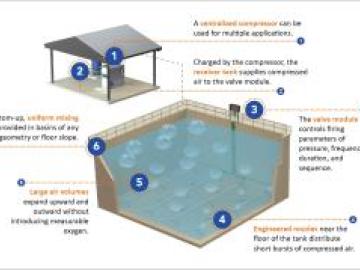Wastewater Best Practices: Austrian Wastewater Plant is a Net Producer of Energy
Did you know that wastewater contains ten times the energy needed to treat it? Located near Strass im Zillertal, the Strass wastewater treatment plant (WWTP) serves 31 communities in the Achental and Zillertal valleys east of Innsbruck, Austria. It provides wastewater treatment for a population that ranges from approximately 60,000 in the summer to 250,000 during the winter tourist season, and has treatment requirements that include organic and nitrogen removal. An energy-independent facility, the plant produces more electrical energy than it requires for its operation.



